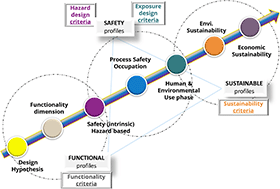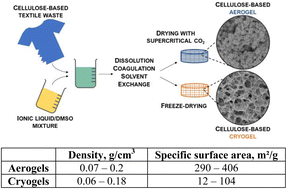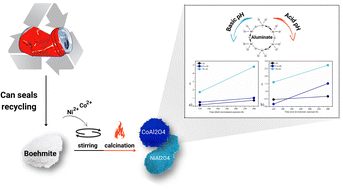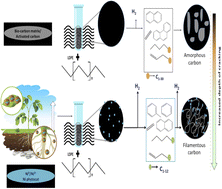Themed collection Topic highlight: Circular economy

Chemistry and pathways to net zero for sustainability
Chemistry has a vital role in enabling the reductions in greenhouse gases, stewardship of material resources and new production processes needed to bring net CO2 emissions to zero by 2050, keeping within 1.5 °C of global warming.

RSC Sustain., 2023,1, 1704-1721
https://doi.org/10.1039/D3SU00125C
Some of the challenges faced by the Composites Industry in its bid to become more sustainable
The Composites Industry needs to participate in future circular chemical economies. Cooperation, standardisation and increased availability of transparent industry data for life cycle analysis, are seen as critical to a more sustainable future.

RSC Sustain., 2023,1, 1737-1742
https://doi.org/10.1039/D3SU00200D
Status, implications and challenges of European safe and sustainable by design paradigms applicable to nanomaterials and advanced materials
Current European (EU) policies, such as the Green Deal, envisage safe and sustainable by design (SSbD) practices for the management of chemicals, which cogently entail nanomaterials (NMs) and advanced materials (AdMa).

RSC Sustain., 2023,1, 234-250
https://doi.org/10.1039/D2SU00101B
Chemical recycling of PET to value-added products
This review has focused on the concept of upcycling, which involves utilizing PET waste as a raw material for the production of value-added products such as monomers, fine chemicals, hydrogen, or carbon materials.

RSC Sustain., 2023,1, 2135-2147
https://doi.org/10.1039/D3SU00311F
Hydrometallurgical recycling technologies for NMC Li-ion battery cathodes: current industrial practice and new R&D trends
Latest advances in hydrometallurgical recycling open new sustainable processing options beyond efficient recovery of metals towards direct recycling and upcycling of the NMC active materials.

RSC Sustain., 2023,1, 1932-1951
https://doi.org/10.1039/D3SU00142C
A review on spent lithium-ion battery recycling: from collection to black mass recovery
The advent of lithium-ion battery technology in portable electronic devices and electric vehicle applications results in the generation of millions of hazardous e-wastes that are detrimental to the ecosystem.

RSC Sustain., 2023,1, 1150-1167
https://doi.org/10.1039/D3SU00086A
Bio-based agricultural products: a sustainable alternative to agrochemicals for promoting a circular economy
Utilizing waste streams to produce bio-based products has the potential to promote a circular economy. In addition, by incorporating biowaste into the circular economy, the production of sustainable bioproducts and bioenergy can be enhanced.

RSC Sustain., 2023,1, 746-762
https://doi.org/10.1039/D3SU00075C
Recycling post-consumer PLA into acrylic acid or lactide using phosphonium ionic liquids
Post-consumer poly(lactic acid) (PLA) is recycled to high value monomers, either acrylic acid (AA) or lactide (LAC), using a phosphonium ionic liquid as the active solvent, in the presence or absence of an acid cocatalyst.

RSC Sustain., 2023,1, 83-89
https://doi.org/10.1039/D2SU00078D
Recovery of palladium from waste fashion items through food waste by-products
We propose an affordable and safe route to recover palladium in its metallic form from waste fashion items and recycle it in electronic devices.

RSC Sustain., 2023,1, 2350-2357
https://doi.org/10.1039/D3SU00242J
Surface modification of aramid fiber meshes – the key to chemically recyclable epoxy composites
Fiber surface functionalization can play a dual role in the development of fiber reinforced polymer composites; improving the overall performance and enabling recovery of high-quality fibers.

RSC Sustain., 2023,1, 1967-1981
https://doi.org/10.1039/D3SU00258F
A techno-economic approach to guide the selection of flow recyclable ionic liquids for nanoparticle synthesis
An experimentally guided, early-stage techno-economic analysis reveals how ionic liquids can be economically adapted at scale through novel recycling methods to unlock their environmental benefits when used as solvents for nanoparticle syntheses.

RSC Sustain., 2023,1, 1861-1873
https://doi.org/10.1039/D3SU00182B
An integrated green process for the extraction of triterpenic acids from Eucalyptus globulus leaves after hydrodistillation
An integrated process using Eucalyptus globulus essential oil as a bio-based solvent to extract triterpenic acids from hydrodistilled leaves is discussed.

RSC Sustain., 2023,1, 1016-1024
https://doi.org/10.1039/D3SU00076A
Will the circle be unbroken? The climate mitigation and sustainable development given by a circular economy of carbon, nitrogen, phosphorus and water
Closing the loop in the flow of C, nutrients and water between agriculture, the human diet and sanitation services offers benefits for humanity across multiple platforms of public health, food security and climate mitigation.

RSC Sustain., 2023,1, 960-974
https://doi.org/10.1039/D2SU00121G
Circular valorization of coffee silverskin through supercritical CO2 for the production of functional extracts
Supercritical CO2 efficiently extracts classes of polar compounds connected with the relevance of silverskin's phytochemical profile, justifying the valorization of this coffee waste towards added value products.

RSC Sustain., 2023,1, 563-573
https://doi.org/10.1039/D3SU00037K
Upcycling of spent functional biocarbon adsorbents to catalysts for the conversion of C5/C6 carbohydrates into platform chemicals
Effective amino-functional carbon adsorbents for heavy metals are upcycled to catalysts for converting C5/C6 carbohydrates into food additives and biochemicals.

RSC Sustain., 2023,1, 554-562
https://doi.org/10.1039/D3SU00004D
Upcycling of textile waste into high added value cellulose porous materials, aerogels and cryogels
Aerogels and cryogels were obtained from cellulose-based textile waste.

RSC Sustain., 2023,1, 335-345
https://doi.org/10.1039/D2SU00084A
From waste to wearable: an alternative waste stream for unusable textiles turned into piezoelectric textiles
A new recyclability path for unusable textiles are processed into electronic textiles. These materials can be implemented into such applications as energy harvesting or sensing devices that can be worn as demonstrated by our smart mask.

RSC Sustain., 2023,1, 326-334
https://doi.org/10.1039/D2SU00068G
Unlimited recyclable wearable sensors based on a homogeneous ionic liquid and polyvinyl alcohol network
Smart wearable electronics are now of great significance in the fields of biomedical applications and environmental sensors.

RSC Sustain., 2023,1, 261-269
https://doi.org/10.1039/D2SU00040G
Color stability of blue aluminates obtained from recycling and applied as pigments
Aluminates have been used as synthetic inorganic pigments due to their structural stability.

RSC Sustain., 2023,1, 159-166
https://doi.org/10.1039/D2SU00057A
Biologically bound nickel accelerated de-polymerization of polyethylene to high value hydrocarbons and hydrogen
The synergy of Ni-phytocat and microwave driven process leads to highly desirable monocyclic aromatics and low molecular weight hydrocarbons, and H2, thereby paving the way to harness complete circular chemical potential of plastic waste.

RSC Sustain., 2023,1, 117-127
https://doi.org/10.1039/D2SU00001F
About this collection
A circular economy aims to minimise resource consumption, waste generation, and environmental impact while maximizing the value derived from resources and materials. Designing materials to be recyclable, to last longer, and for their preparation of make efficient use of resources and raw materials, are all key considerations.
This collection highlights some of our recent publications in this area.
To contribute your own research to the journal, visit our
submission platform.